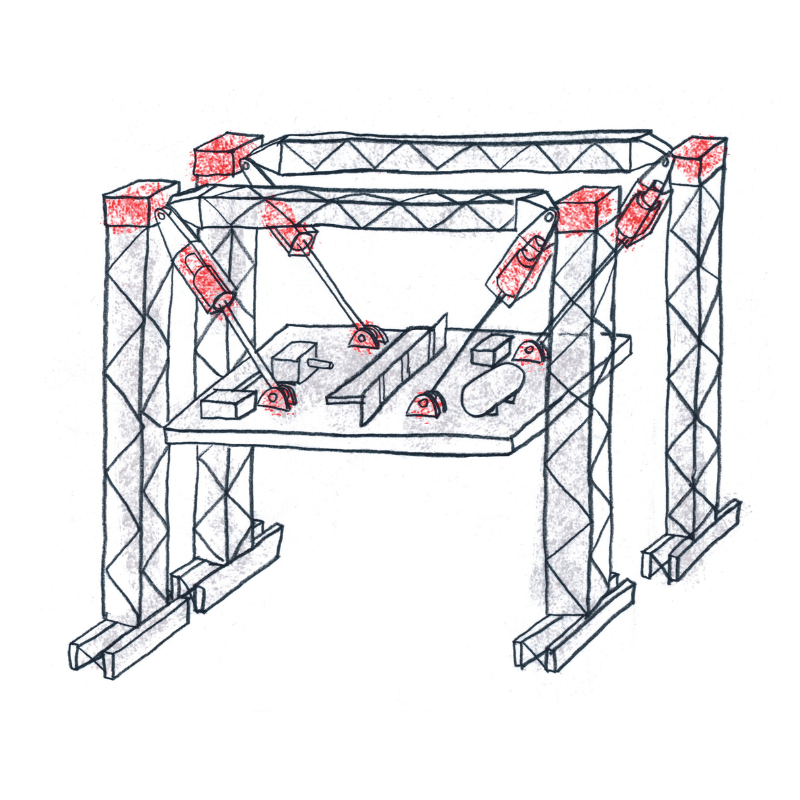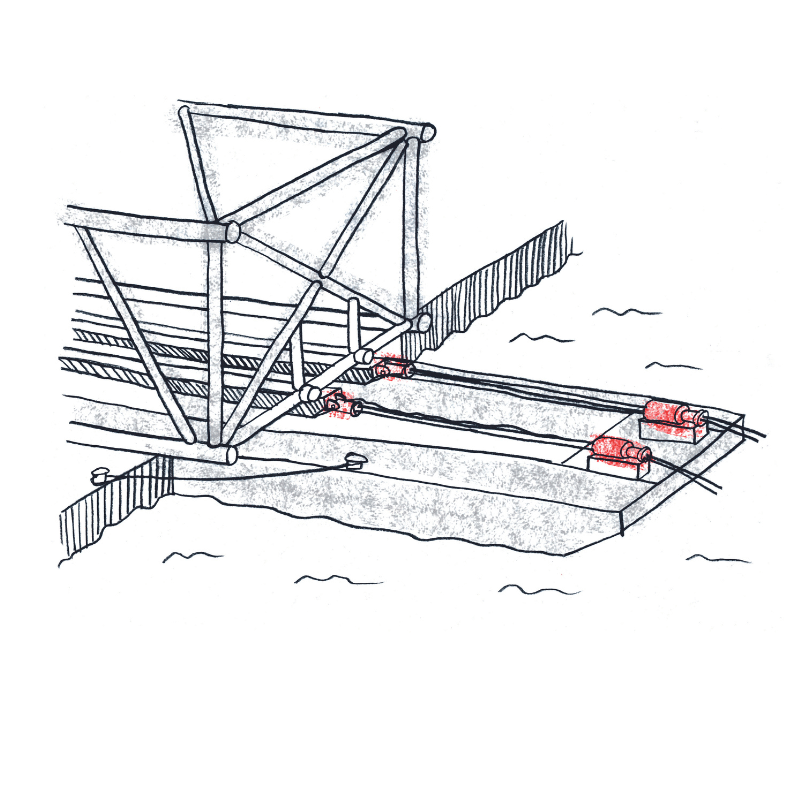Wired for strength: strand jacks made simple
FEATURE
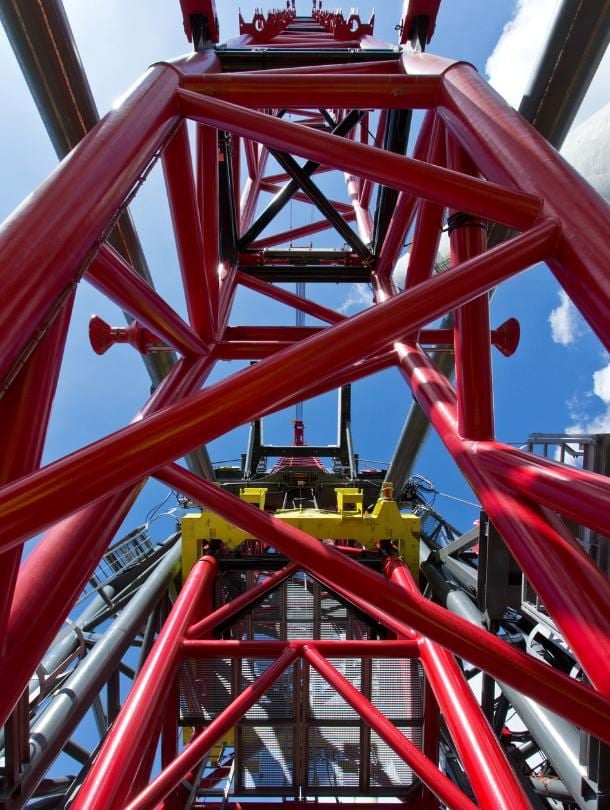
FEATURE


The strands are alternately gripped and released by these wedges. The system lifts by following a sequence of pulling and gripping the set of wires attached to the load:
1A - The strand is gripped by the wedges at the top of the cylinder.
1B - The strand is pulled upwards by the hydraulic cylinder while the lower wedges are loose.
2A - The strand is then gripped by the lower wedges and kept in place.
2B - The cylinder moves back down while the top wedges are released.
3 - The strand is gripped once more at the top of the cylinder and then released by the wedges at the bottom, and so the cycle of gripping and releasing by each set of wedges is continued until the load is in place.
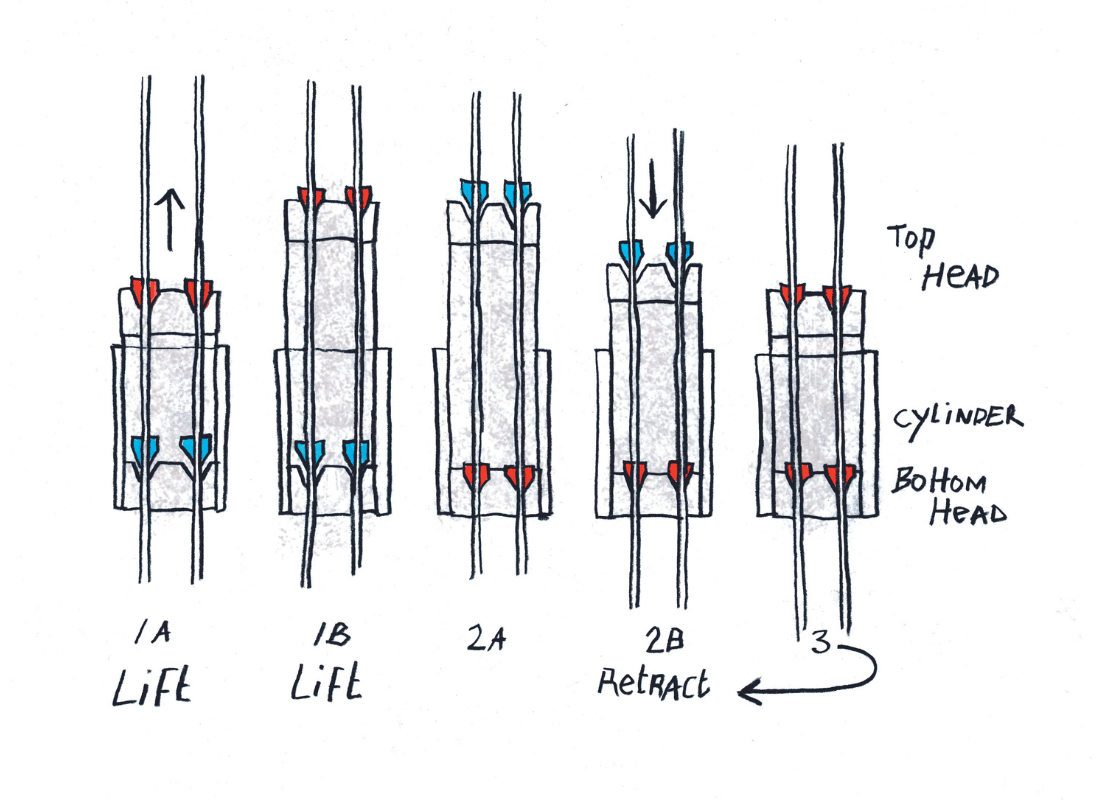
After every stroke the lift stops as the strand jack takes grip again so, unlike hoisting or winching, it is not a continuous lifting motion. Going down with a load is a little more complicated because the strands need to be pulled up to release the bottom wedges before the cylinder can travel down.
When you pull a bucket of water out of a well, you use your arm and hands to pull it up. The hand works like the wedge clamping on the rope, the arm works like the cylinder making the stroke.
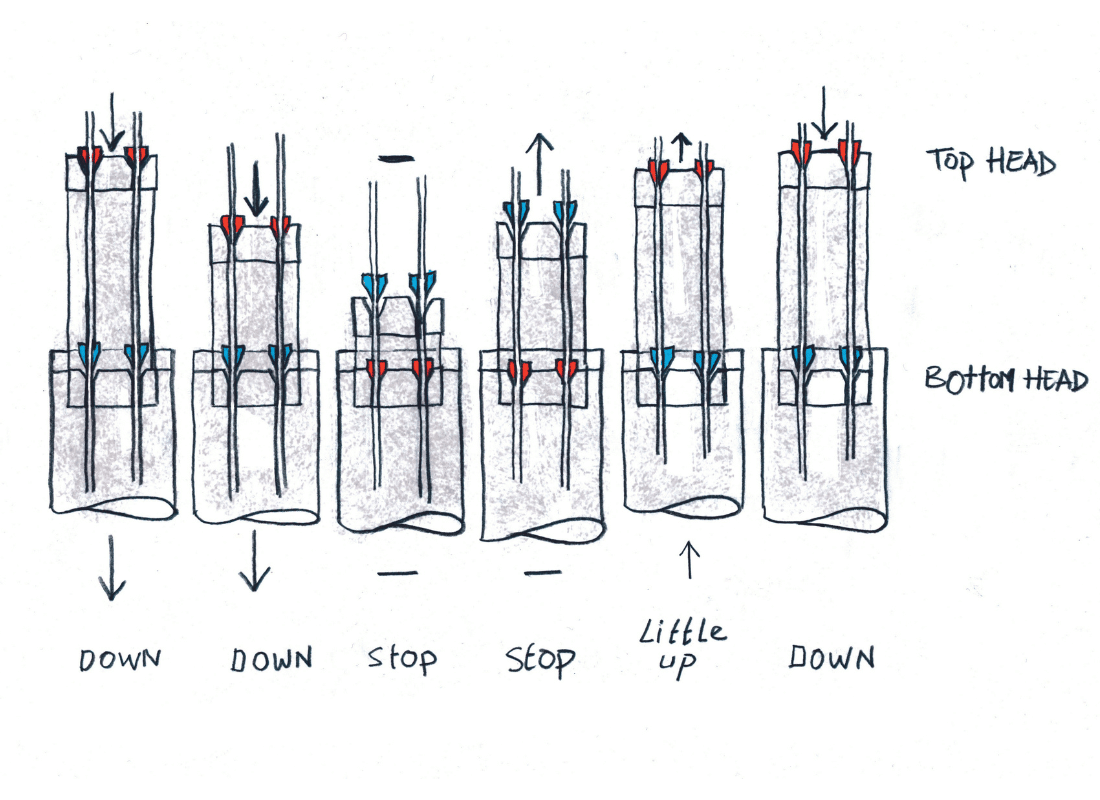
The strand jack has been used by the heavy lift industry for over 50 years. They pull or lift a load and generally require less equipment to be mobilized than a crane lift.
Mammoet’s fleet of over 200 strand jacks ranges in individual capacity from 15 to 900 tons. If you think about lifting a bucket of water at arm's length, rather than if you stand directly over the bucket, you understand that when you lift things from the side, or at an angle, the higher the load is lifted, the more strength is required.
Unlike cranes, which experience this because of the angle at which their booms are placed, strand jacks exert their force in a direct line, above the load. This means they can continually raise the same amount of weight without losing capacity. With their small footprint, they are suitable for confined spaces.
Using multiple-strand jacks together enables more concentrated lifting capacity. When projects require many strand jacks to be operated simultaneously and in synchronicity, they are coordinated and controlled by computers.
